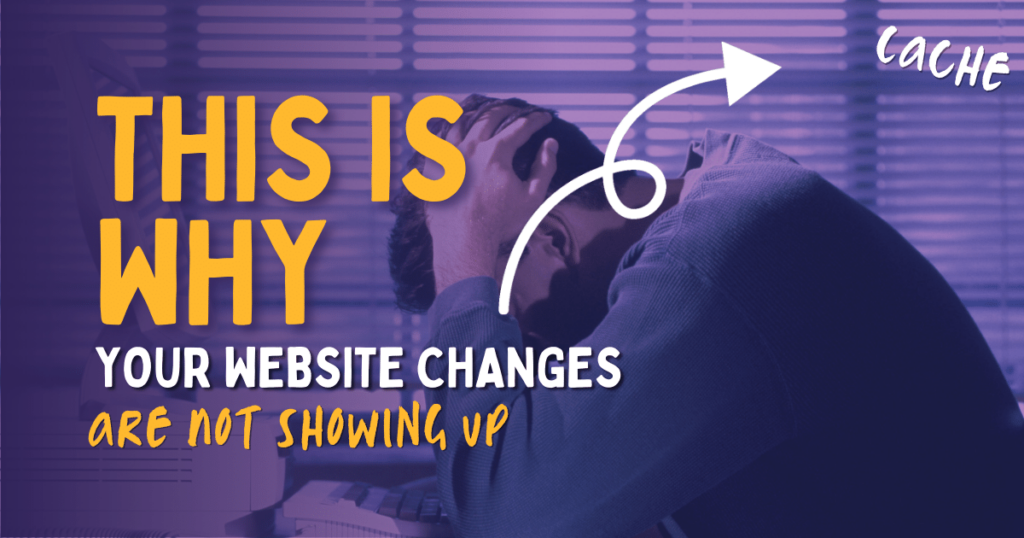Every website owner should regularly check these 10 things on their site to make sure it’s running smoothly, securely and getting the most out of their hosting service.

Your website is no different to a car. It needs regular maintenance, or it will break down. This article will look at some of the things you should be checking on your website regularly, in order to keep it fast, secure and performing well.
When it comes to the health of your website, don’t neglect the small things. They all add up, and they may be more important than you think. There are many tests you can run through to ensure that your website is performing well.
Here are 10 easy-to-perform checks, so you can stay in the loop with the status of your website.
Contents
- 1. Is your website going down without you knowing?
- 2. Are your backups running smoothly?
- 3. Have you got an update schedule for your website’s plugins, themes and CMS?
- 4. Are your Analytics tracking codes working correctly?
- 5. Are your website’s contact forms and subscription forms working?
- 6. Are you maintaining your position in Google for your target keywords?
- 7. Have you got any outdated information on any of the pages on your website?
- 8. Are your contact details, opening hours and description of your services/products correct?
- 9. What’s the loading speed of your most important pages?
- 10. Are there any broken links on your website that need updating or removing?
1. Is your website going down without you knowing?
If your business relies on your website to sell products or services, make sure you don’t lose money by going offline.
Your website may be going offline at certain times of day or night without you knowing. You need an uptime monitor to check its status and alert you.
If your server goes down at your web host, it can affect your customers and reputation. An uptime monitor is a tool that can check your server’s status at regular intervals. If it detects downtime, it can send you an email or text message alert and provide you with the information for further investigation.
The best uptime monitoring services will also provide detailed reports of your server’s performance so that you can pinpoint the cause of any issues.
Uptime Robot is an excellent free option.
2. Are your backups running smoothly?
Is your website getting backed up and are your backups running smoothly? It’s so important to have regular backups of your website.
It’s like having an insurance policy: you hope you never need to use it, but if there is an emergency, you’re covered.
If your site is hacked or your host has a major outage, having a recent backup could save you from having to start from scratch all over again.
Also, you’ll want to make sure that your backups aren’t consuming too many resources and causing slow load times on your site. So, you should schedule your backups to run at a time of day when traffic is at its lowest.
Backups can be a bit tricky, which is why we’re going to run through some simple tips for making sure your backups are running smoothly.
One of the biggest mistakes people make is storing your website’s backups on the same server as your website! You should be sending them to a remote storage area, such as Amazon S3 or Google Drive. So, you also need enough storage space at the remote storage location to store a sufficient amount of backups.
Updraft Plus is an excellent choice for backing up your website. It can manage automatic backups and send them to a remote location of your choice.
3. Have you got an update schedule for your website’s plugins, themes and CMS?
If you’re using WordPress then you really should be keeping it up-to-date. WordPress updates are frequent, but when you add plugins and themes into it, there could potentially be updates available every day for your website.
Outdated plugins, themes and WordPress core means that your site may be insecure or not performing as well as it should.
You can choose to update your plugins manually or automatically within WordPress.
On the plugin screen in your dashboard, click ‘Enable Auto Updates’ next to each plugin to ensure they’re updated automatically.
Related: WordPress Best Practice Guide
4. Are your Analytics tracking codes working correctly?
If you’re like most website owners, you have some sort of analytics software linked to your site. You probably want to know how many people are visiting your site, what type of device they’re using, where they came from and what they’re doing when they get there.
Analytics tools can be a helpful source of these sorts of data, but to get that information, you need to put their tracking codes in the right place. If you don’t have them in the right spot — or if you have multiple tracking codes on the same page — problems can arise.
Thousands of websites have their Analytics codes incorrectly configured or added multiple times. This results in inaccurate data reported but the worst part is that this historical data cannot be easily edited!
Some websites end up with years of useless analytics data because it wasn’t set up correctly.
5. Are your website’s contact forms and subscription forms working?
Would you even know if your contact forms weren’t working? Think about it…
Errors in contact form submissions are common due to a huge misunderstanding of what contact forms actually do.
Contact forms send emails and sometimes they store submissions in the website’s database. Sometimes they send submissions to a third party Customer Relationship Manager (CRM).
How is your contact form configured? Where does it send submissions?
Each site is different, but if you’ve had a sudden drop in queries, it could be that your contact form isn’t work. It’s important that you test this on a regular basis.
6. Are you maintaining your position in Google for your target keywords?
If you aren’t tracking your search engine rankings then you’re potentially wasting time and money.
If you have an SEO strategy in place, it’s important to make sure that it’s working. Tracking your keyword rankings is one of the best ways to do this.
If you’re not tracking your search engine rankings then how do you know if you’re making progress?
Tracking your keyword rankings is essential to help you see how well your SEO campaign is performing. If your website isn’t ranking for your target keywords then you should be aware of this so that you can take action.
By tracking your rankings on a regular basis, you’ll be able to see which keywords are moving up the ranks and which ones aren’t progressing at all. This will allow you to make strategic changes to improve the performance of your SEO campaign.
Keyword ranking tools also give you insight into other websites’ performance so that you can compare yourself with them and identify areas for improvement.
SERPRobot is an excellent way to track your keyword rankings. It’s free, but has paid upgrades available if you need to track large numbers of keywords.
7. Have you got any outdated information on any of the pages on your website?
Having outdated information on your website can be a problem. First, it can confuse and frustrate visitors. They may also think you don’t keep up with your site, or that you are no longer in business. Outdated information can also affect your search engine rankings. If a search engine thinks that your website has outdated information, it could negatively affect your ranking.
You may have a 2 year old blog post that ranks well on Google and drives a lot of traffic to your site. However, if that blog post is out-of-date, your readers could get frustrated and it could affect your reputation.
Updating your old blog posts that get lots of traffic is an excellent idea. You can update your old blog posts by adding additional value, removing old information and even adding calls to action leading people towards your products, services or sales funnel.
After you have identified all of the out-of-date information on your website, it’s time to update that data.
8. Are your contact details, opening hours and description of your services/products correct?
Your business website is your virtual front door. If it’s not up-to-date, potential customers will find it harder to engage with you. A website with inaccurate or incomplete information can look like an abandoned site, which might lead consumers to think your business is no longer in operation.
A simple check should be done regularly to ensure that all the basic contact details and opening hours are correct. Also make sure that the most recent products and services are listed on your website (especially if they have been added since the last update).
It’s a good idea to regularly go through your entire website and look for anything that may be outdated. Some good examples are phone numbers, addresses, emails, and any product or service information that has changed since you last updated the page.
It’s so surprising how many websites have inaccurate contact details. You could literally be losing sales because your phone number is wrong!
9. What’s the loading speed of your most important pages?
Slow websites can impact your search rankings and customer conversions. Basically – a slow website is hurting your bottom line.
There are so many different factors that may be affecting the speed of your website:
- Images and videos
- Fonts and icons
- Third-party scripts like Google Analytics
- Unused JavaScript and CSS
- Excessive DOM Size (too many nested <div> elements in HTML)
- Poorly configured hosting
- Poorly coded WordPress theme
The good news is, by fixing your website speed issues, you’ll make Google and other search engines like your site more, as well as giving your customers a more enjoyable experience.
First, you need to test your page speed using Google Lighthouse, Page Speed Insights and GTMetrix. These tools will give you detailed reports on the loading speed of your pages.
Each site is different, but these tools will give you hints, resources and tips on how to improve the speed of your most important pages.
10. Are there any broken links on your website that need updating or removing?
Broken links are links to missing content. These broken links can be internal, meaning on your own website, or external, meaning on a third-party site.
There are many reasons why links become broken. The owner of the linked site might remove the page or change its URL, or the linking site may have misspelled the link or mistyped it.
Broken links are terrible for user experience. As a website owner, you should do your best to update any broken links on your website.
If your own website has ever changed URLs, even partially, then you’ll need to have a redirect setup and fix any instances of links to the wrong version. Visitors on your site may be seeing 404 – Page Not Found errors if you forget this step.
Check out Dead Link Checker – it can scan your website for broken links.




